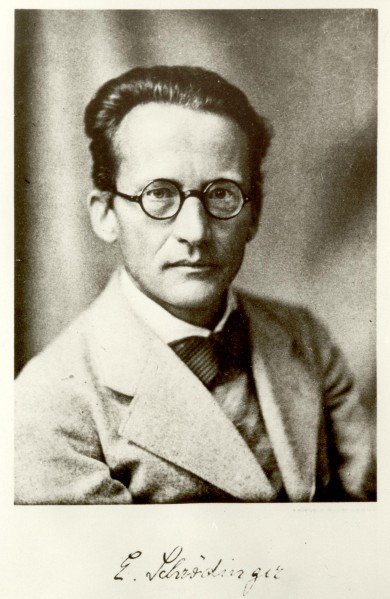Born in Vienna, Erwin Schrödinger studies physics there and receives his doctorate in 1910. He is appointed professor at the University of Zurich in 1921 and in 1927 becomes Planck’s successor in Berlin.
Following up on de Broglie’s idea of material waves in winter 1925/26 Schrödinger develops his wave mechanics to describe atomic processes – in contrast to Heisenberg-Born matrix mechanics. The Schrödinger equation
quickly becomes accepted as the preferred means of representing quantum mechanics and he receives the Nobel Prize in 1933 for this work. He has less success with his realistic analysis of wave functions. In contrast, he never gets used to the idea of Born’s statistical interpretations of the same.
Schrödinger leaves Germany in 1933. In 1939, he is appointed director of the newly founded institute for Advanced Studies in Dublin. He returns to his native Austria in 1956.
 Scene
Scene


 1st Slide
1st Slide
 Branching Point
Branching Point
 Module: Quantentheorie: EPR-Paradoxon
Module: Quantentheorie: EPR-Paradoxon Sequence: 0.0. Start_Quantentheorie_EPR
Sequence: 0.0. Start_Quantentheorie_EPR Branching Point: Paradoxes of Quantum Mechanics
Branching Point: Paradoxes of Quantum Mechanics Slide: The Layout of the Experiment
Slide: The Layout of the Experiment

